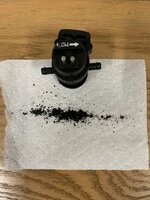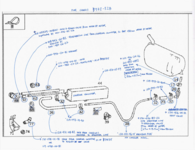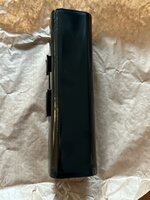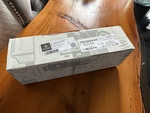Moderator edit: See post #58 for the final solution.
Hello all....
I have been chasing an issue for the past couple of weeks
long story short : car starts great in cold start and runs great....when I shut off the engine and try to restart, it takes longer ( 2.5 seconds instead of 1.2 or so)
it is NOT ignition related ( caps , rotors, plugs, insulator (dry!!) , etc are all good)....I believe it is fuel related
I did a test where i drove without the fuel tank cap and the car was acting better after every restart ( still long crank, but not sluggish anymore)
ANYWAY, my question is about the PURGE VALVE : when i remove it, there is always some charcoal bits falling out of it!!! IS IT NORMAL ? or do i need a new charcoal canister????
Today, I will drive to Oreilly autoparts to get some MAF cleaner and clean the purge valve too.
Thank you
Hello all....
I have been chasing an issue for the past couple of weeks
long story short : car starts great in cold start and runs great....when I shut off the engine and try to restart, it takes longer ( 2.5 seconds instead of 1.2 or so)
it is NOT ignition related ( caps , rotors, plugs, insulator (dry!!) , etc are all good)....I believe it is fuel related
I did a test where i drove without the fuel tank cap and the car was acting better after every restart ( still long crank, but not sluggish anymore)
ANYWAY, my question is about the PURGE VALVE : when i remove it, there is always some charcoal bits falling out of it!!! IS IT NORMAL ? or do i need a new charcoal canister????
Today, I will drive to Oreilly autoparts to get some MAF cleaner and clean the purge valve too.
Thank you
Last edited by a moderator:















